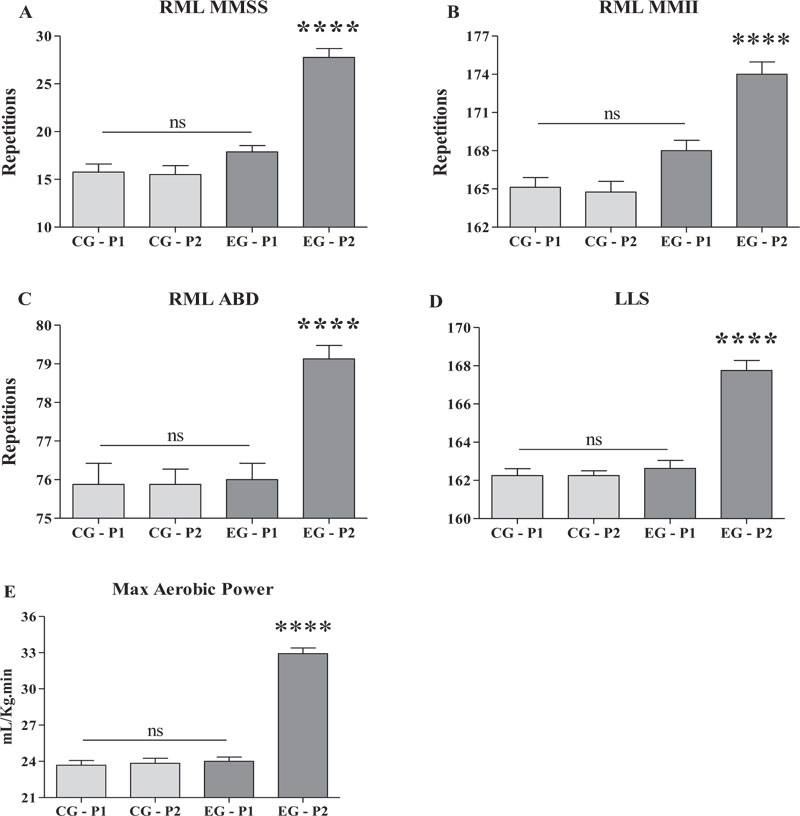Fig. (1) Effect of High-Intensity Intermittent Training on the physical performance of adults. Elderly subjects were divided into a Control Group (CG, n = 16) and an Experimental Group (EG, n = 16) that underwent twelve weeks of high-intensity intermittent training. Before (P1), and after (P2) the interventions, the endurance of the Upper Limbs (RML MMSS) (Fig. A), the endurance of Lower Limbs (RML MMII) (Fig. B), the endurance of Abdominal muscle (RML ABD) (Fig. C), Lower Limb Strength (LLS) (Fig. D), and Maximal Aerobic Power (Fig. E). Kruskal–Wallis, with Dunn’s posterior test, was used with a significance of 5% to indicate the possible differences between all moments of data acquisition. Finally, the effect size between the variables was calculated by Choen’s d test. (A, B, C, D and E **** = p >0.0001 EG-P2 vs CG-P1, CG-P2 and EG-P1; ns= non-significant).

